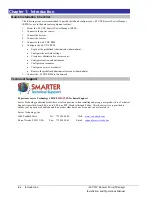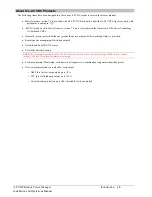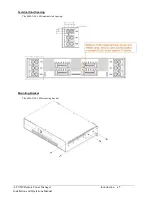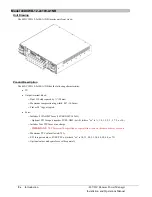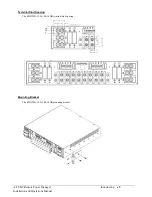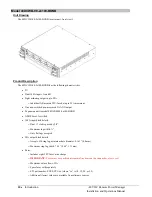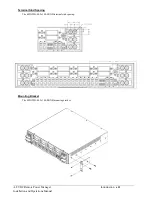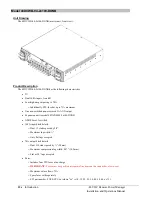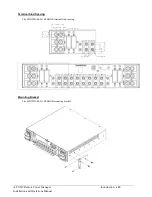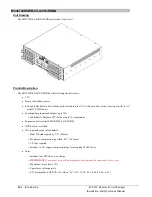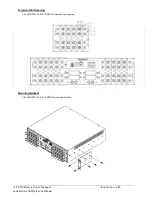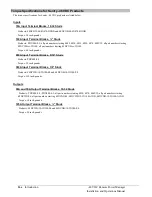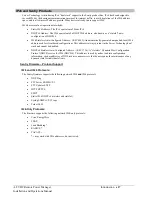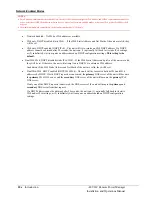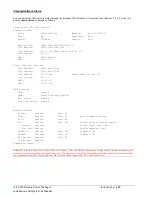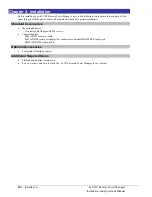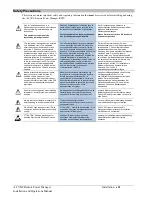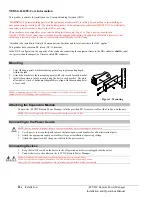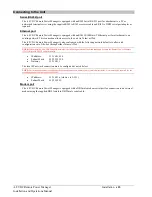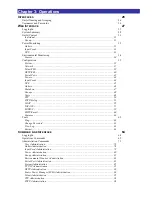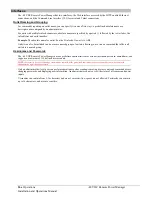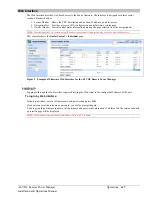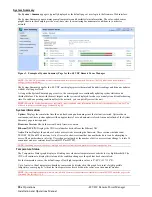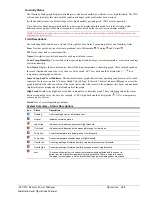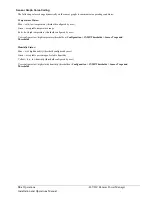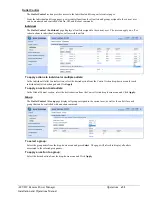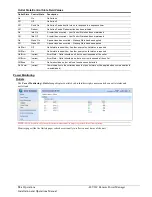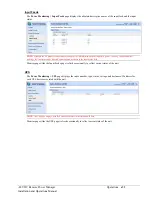
18
Introduction
-48 VDC Remote Power Manager
Installation and Operations Manual
Network-Enabled Modes
NOTES:
For all network-enabled modes described below, the unit will set an auto-configured IPv6 address, and if IPv6 router announcements are
active, a stateless DHCP IPv6 address will also be set. Further, in all network-enabled modes, at least one IPv4 or one IPv6 address will
be active.
For maximum backward compatibility, the default network mode is “IPv4 only”.
Network disabled – No IPv4 or IPv6 addresses available.
IPv4 only, DHCP disabled (static IPv4) – If the IPv4 Static Address and Net Mask of the unit are valid, they
will be set.
IPv4 only, DHCP enabled (DHCP IPv4) – The unit will try to resolve an IPv4 DHCP address. If a DHCP
address cannot be obtained after 90 seconds, the unit can: (1) optionally fall back to its static IPv4 settings,
or (2) indefinitely wait to acquire an address based on DHCP configuration settings
. This setting is the
default.
Dual IPv6/IPv4, DHCP disabled (static IPv6/IPv4) – If the IPv6 Static Address and prefix of the unit are valid,
they will be set. Otherwise, the unit will attempt to use DHCPv6 to obtain an IPv6 address.
In addition, if the IPv4 Static Address and Net Mask of the unit are valid, they will be set.
Dual IPv6/IPv4, DHCP enabled (DHCP IPv6/IPv4) – The unit will try to resolve both its IPv6 and IPv4
addresses by DHCP. If both DHCP requests are answered, the
primary
DNS server of the unit will become
the
primary
IPv6 DNS server, and the
secondary
DNS server of the unit will become the
primary
IPv4
DNS server.
If only one of the DHCP requests is answered, the DNS servers of the unit will map to the
primary
and
secondary
DNS server from that request.
If a DHCP address cannot be obtained after 90 seconds, the unit can: (1) optionally fall back to its static
IPv4 and/or IPv6 settings, or (2) indefinitely wait to acquire an address based on DHCP configuration
settings.

